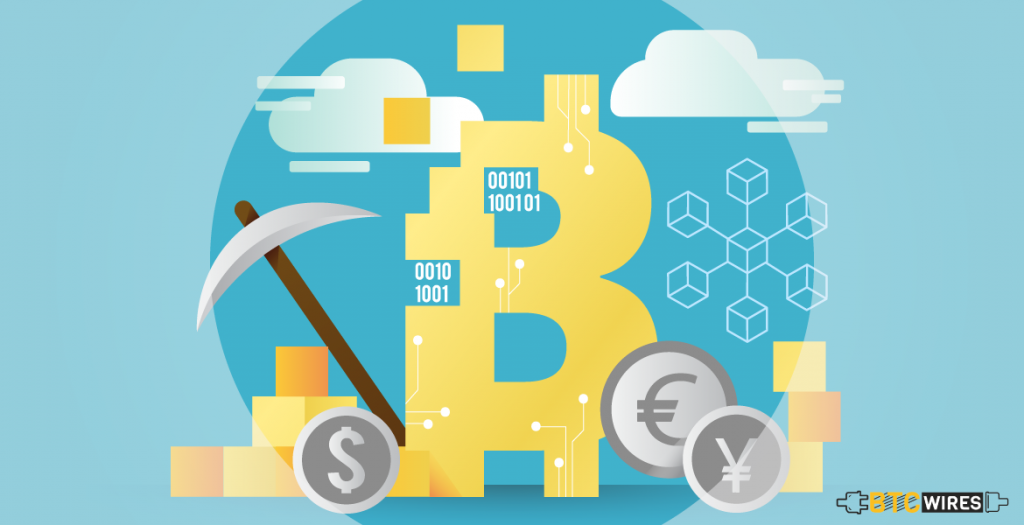Nov 17, 2018 18:30 UTC
| Updated:
Nov 17, 2018 at 18:30 UTC
Proof of Work
Widely recognized being some of the crowning achievements of Bitcoin founder Satoshi Nakamoto, the idea for Proof of Work was published in 1993 by Moni Naor and Cynthia Dwork. It underwent the foundations for many block-driven networks as well as consensus mechanism of choice for the majority of digital currencies currently in circulation.
In a simple term, the objective of this consensus mechanism and why is it useful in blockchain is to bring everyone in agreement to trust one another.
What is Proof of Work?

It’s a protocol that needs a certain amount of effort to preventing bad players from doing harm. These attacks by the malicious entities generally include sending innumerable spam messages or launching DDoS (Distributed Denial-of-Service), which deplete the computing resources of those of affected users, which results in a considerable slow down of their computers.
The concept of Proof of Work was introduced by Hal Finney to the financial world somewhere between 2004 and 2009. The idea of a computer scientist was adopted at the time of implementing the Bitcoin protocol. Prominently, Hal Finney is recognized to have partaken in the first Bitcoin transaction along with Satoshi Nakamoto, the cryptocurrency creator. Tens of thousands of other cryptocurrencies have emerged after the invention of Bitcoin, and many of them also use Proof of Work.
Proof of Work Mechanism
Proof of Work is quite simple as a comparison with Proof of Stake. For completing a page of blockchain ledger, users must figure out complex mathematical equations before they are validating the transactions. This entire process is referred to as mining, and those who partake in this are called ‘minors.’
These mathematical issues are difficult to compute yet easy to verify. Once a miner solves the mathematical problems, he is rewarded with a block reward, the corresponding digital currency. For instance, if a user is mining on the Bitcoin Blockchain, then he is rewarded in Bitcoin. If they are mining on the Monero blockchain, they are rewarded with Monero.
Once that’s done, then the transactions in the block are validated, and the block is added on the chain creating a chain of the block. Real computational work runs in the background which has been termed as Proof of Work. Mathematical equations become even harder as the time goes by.
This is something that results in increasing the difficulty, but intentionally. The notion is to make sure that each mined coin needs a substantial amount of electricity.
Proof of Work Applied To Cryptocurrency Platforms

In order to understand the basics of how Proof of Work functions when applied to crypto platforms, it’s important to discover how it is implemented on the Bitcoin Blockchain.
Well, the blockchain is a public distributed ledger keeping an immutable record of all the transactions which have ever been done on its network.
Though many other cryptocurrency platforms similarly use Proof of Work system, yet Bitcoin’s transactions are grouped in a series of “blocks” for preventing double-spending. This is when a user may attempt to spend the same funds twice.
The Bitcoin blockchain is public, meaning that everyone on the network can view the transactions. Also, these digital transactions are broadcast to all of Bitcoin’s network participants who are distributed across the globe. Typically, this is how the cryptocurrency was envisioned to work in a decentralized or distributed manner.
The Algorithm’s Implementation in Blockchain

It is well-known that miners solve the mathematical puzzle, form a new block and then confirm the transactions.
How complex can the puzzle be? Well, this is something that depends on the number of users, the network load and the current power. The hash of each block comes with the hash of the previous block that not just enhances the security but prevents any block violation too.
In case a miner manages to solve the puzzle, then the new block is created. The transactions are placed in this newly created block and considered confirmed.
This System of Proof of Work is Used in a Lot of Cryptocurrencies
The most popular application of Proof of Work is Bitcoin. It was this cryptocurrency that laid the foundation for such kind of consensus. The puzzle in this appears to be Hashcash. This algorithm changes the complexity of a puzzle depending on the total power of the network. The average time of a block formation is 10 minutes. Bitcoin-led cryptocurrencies, like Litecoin, have a similar system.
Another large project with Proof of Work is Ethereum. It wouldn’t be wrong to say that the majority of Blockchain applications use Proof of Work consensus model.
Why Use Proof of Work Consensus Algorithm First?

The primary advantages of this system include the anti-DoS attacks defense and low impact of the stake on mining possibilities.
Proof of Work inflicts some limits on the actions to be performed in the network, as the actions require a lot of efforts to be executed. The efficient attack needs a significant computational power as well as time to do the calculations. Thus, the attack is possible, yet a kind of useless since the costs involved are too high.
It makes no difference how much amount you have in your wallet. The thing that matters the most is to have a significant computational power to solve the puzzles and then form new blocks every time. In this way, the money holders are not in charge of making decisions for the whole network.
A Bittersweet Thought

The thing which cannot be avoided is that Proof of Work is expensive. The Bitcoin network currently uses about 24 TWh of energy per year. As the Bitcoin network grows with the passage of time, it needs even greater computing power. The perfectly designed Bitcoin Energy Consumption Index offers the latest facts & figures. You can even see the charts going up. The usage of energy doubles after every six months period.
Ultimately, Proof of Work system makes sure that blockchain is valid. It also means, for Bitcoin, that the coins are not mined too frequently, and miners have incentives for maintaining the network. It is also an infinitely scalable consensus protocol of blockchain on the flipside.


























































